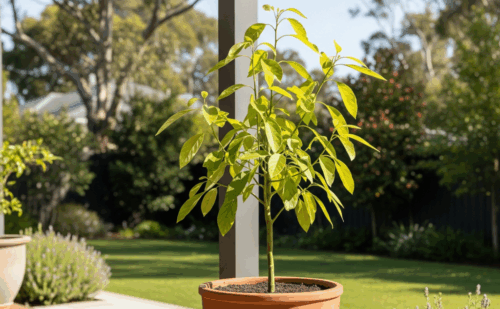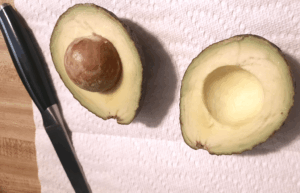 The dream of endless homemade guacamole might seem like a fantasy, but growing your own avocado tree is surprisingly achievable—even if you’re starting with nothing more than the pit from your last avocado toast.
The dream of endless homemade guacamole might seem like a fantasy, but growing your own avocado tree is surprisingly achievable—even if you’re starting with nothing more than the pit from your last avocado toast.
While patience is essential (we’re talking years, not months), the journey from pit to plant offers a rewarding gardening experience that connects you with one of nature’s most beloved fruits.
Understanding Your Avocado Adventure
Before diving into the how-to, let’s set realistic expectations. Growing an avocado tree from a pit is more about the journey than the destination. Most home-grown avocado trees take 5-10 years to produce fruit, and some may never fruit at all. Trees grown from pits often don’t produce fruit identical to their parent due to genetic variation. However, you’ll still end up with a beautiful, glossy-leaved houseplant that can eventually become a stunning outdoor tree in warmer climates.
The good news? The process itself is fascinating, educational, and surprisingly therapeutic. Watching that first green shoot emerge from what seemed like kitchen waste feels like witnessing a small miracle.
Selecting and Preparing Your Avocado Pit
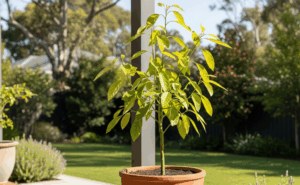 Your avocado adventure begins at the grocery store or farmers market. Choose a ripe, healthy avocado—preferably organic to avoid potential chemical treatments that might inhibit sprouting. Hass avocados work well, but any variety will do.
Your avocado adventure begins at the grocery store or farmers market. Choose a ripe, healthy avocado—preferably organic to avoid potential chemical treatments that might inhibit sprouting. Hass avocados work well, but any variety will do.
When extracting the pit, handle it gently. Rinse it thoroughly under lukewarm water, removing all fruit residue without scrubbing away the brown seed coat. Some people peel this papery outer layer, but it’s not necessary and may actually slow sprouting.
Look for the pit’s orientation—it’s not perfectly round. The slightly pointed end goes up, while the broader, flatter end goes down. This distinction matters for proper root and shoot development.
The Classic Toothpick Method
The toothpick suspension method remains popular because it’s simple and allows you to observe the entire sprouting process. Insert three to four toothpicks around the pit’s middle, creating a stable platform to suspend it over a glass of water.
Position the pit so the bottom third sits in water, with the pointed end facing up. Place your setup in a warm location with bright, indirect light—a kitchen windowsill works perfectly. Avoid direct sunlight, which can overheat the water and stress the developing seed.
Change the water every few days to prevent bacterial growth and maintain oxygen levels. The water should remain clear and fresh-smelling. If it becomes cloudy or develops an odor, replace it immediately and consider giving the pit a gentle rinse.
Alternative Sprouting Methods
 While toothpicks work well, several alternatives exist. You can plant the pit directly in a small pot with well-draining potting mix, keeping the top half exposed. This method eliminates the transplant shock that sometimes occurs when moving from water to soil.
While toothpicks work well, several alternatives exist. You can plant the pit directly in a small pot with well-draining potting mix, keeping the top half exposed. This method eliminates the transplant shock that sometimes occurs when moving from water to soil.
Another option involves wrapping the pit in damp paper towels, sealing it in a plastic bag, and placing it in a warm, dark location. Check weekly for sprouting, rewetting the towels as needed. This method often produces faster results but requires more attention to prevent mold.
Patience and Observation: The Waiting Game
Germination typically takes 2-8 weeks, though some pits may take longer. Don’t lose hope if nothing happens immediately—avocado pits are notoriously unpredictable. The first sign of life is usually a crack appearing in the pit, followed by roots emerging from the bottom.
Once roots reach 2-3 inches long, a shoot will emerge from the top. This shoot grows surprisingly quickly, often doubling in size within days. The first leaves are typically small and may appear bronze or reddish before turning green.
Transplanting to Soil
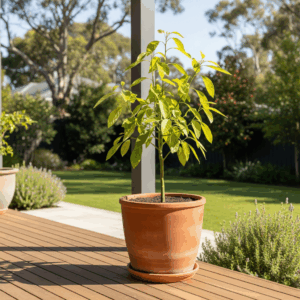 When your seedling has several leaves and roots reaching 4-6 inches long, it’s time to transplant. Choose a pot with drainage holes and fill it with well-draining potting mix. A cactus or succulent mix works well, or you can create your own by combining regular potting soil with perlite or sand.
When your seedling has several leaves and roots reaching 4-6 inches long, it’s time to transplant. Choose a pot with drainage holes and fill it with well-draining potting mix. A cactus or succulent mix works well, or you can create your own by combining regular potting soil with perlite or sand.
Plant the pit so the top half remains above soil level. This prevents the stem from rotting and allows continued growth. Water gently but thoroughly, allowing excess water to drain completely.
Caring for Your Young Avocado Tree
Avocado trees prefer bright, indirect light as houseplants. If you notice leaf yellowing or dropping, it might be receiving too much direct sun or not enough water. Conversely, if growth seems slow and leaves appear pale, consider moving it to a brighter location.
Watering requires a delicate balance. Avocados hate soggy soil but need consistent moisture. Allow the top inch of soil to dry between waterings, then water thoroughly until it drains from the bottom. During winter, reduce watering frequency as growth slows.
Humidity helps, especially in dry indoor environments. Place a humidity tray nearby or group with other plants to create a microclimate. Avoid placing your tree near heating vents or air conditioning units, which can create sudden temperature fluctuations.
Encouraging Healthy Growth
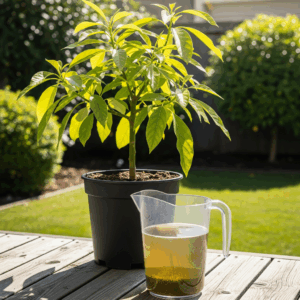 Pinching or pruning your young tree encourages bushier growth rather than a single tall stem. When the main stem reaches 6-8 inches, pinch off the top set of leaves. This forces the plant to develop side branches, creating a fuller appearance.
Pinching or pruning your young tree encourages bushier growth rather than a single tall stem. When the main stem reaches 6-8 inches, pinch off the top set of leaves. This forces the plant to develop side branches, creating a fuller appearance.
Fertilize monthly during growing season (spring and summer) with a balanced, diluted fertilizer. Avoid over-fertilizing, which can damage sensitive roots. During winter, reduce or eliminate fertilization as growth naturally slows.
Transitioning Outdoors
In USDA zones 9-11, your avocado tree can eventually live outdoors year-round. In cooler climates, treat it as a houseplant or move it outdoors during warm months. Gradual acclimatization is crucial—sudden changes in light, temperature, or humidity can shock the plant.
Start by placing your tree in a shaded outdoor area for a few hours daily, gradually increasing exposure over 2-3 weeks. Watch for signs of stress like leaf drop or wilting, and adjust accordingly.
Managing Expectations About Fruit Production
While your tree may never produce fruit, proper care increases the chances. Most avocado varieties need cross-pollination from another tree to fruit effectively. Even then, fruiting depends on numerous factors including tree age, growing conditions, and sometimes pure luck.
Trees grown from pits typically take 5-10 years to mature enough for fruiting. The fruit may differ significantly from the parent avocado in size, flavor, and texture. Some home-grown avocados are delicious, while others might be stringy or bitter.
Troubleshooting Common Issues
Brown leaf tips often indicate low humidity or inconsistent watering. Yellow leaves might signal overwatering, while dropping leaves could mean the plant is adjusting to new conditions. Pest issues are rare indoors but watch for spider mites in dry conditions.
If your pit never sprouts, don’t despair. Success rates vary, and some pits simply aren’t viable. Try again with a fresh pit, ensuring it’s from a fully ripe avocado and hasn’t been exposed to extreme temperatures.
The Joy of the Journey
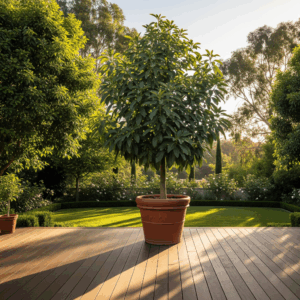 Growing an avocado tree teaches patience, observation skills, and appreciation for plant life cycles. Even if your tree never produces fruit, you’ll have gained valuable gardening experience and a beautiful plant that can live for decades with proper care.
Growing an avocado tree teaches patience, observation skills, and appreciation for plant life cycles. Even if your tree never produces fruit, you’ll have gained valuable gardening experience and a beautiful plant that can live for decades with proper care.
The process connects us to our food sources and provides a tangible reminder of nature’s incredible ability to create life from what might otherwise be discarded. Whether your tree becomes a conversation piece houseplant or eventually graces your backyard with homegrown avocados, the journey itself offers rewards that extend far beyond the kitchen.
Remember, every expert gardener started as a beginner. Your avocado tree represents the beginning of a lifelong relationship with plants and growing. Embrace the learning process, celebrate small victories, and enjoy watching your little green friend grow into something magnificent.


